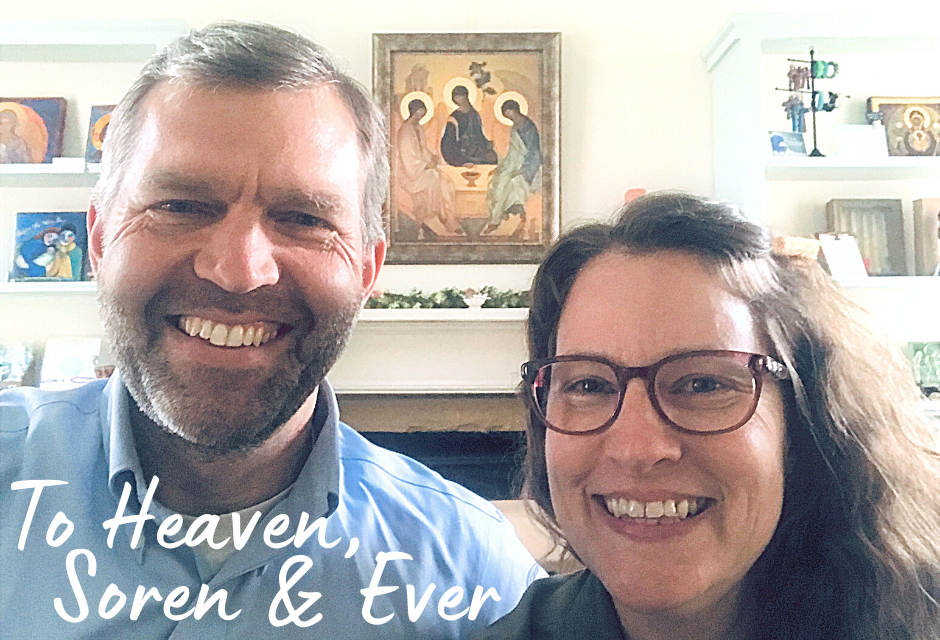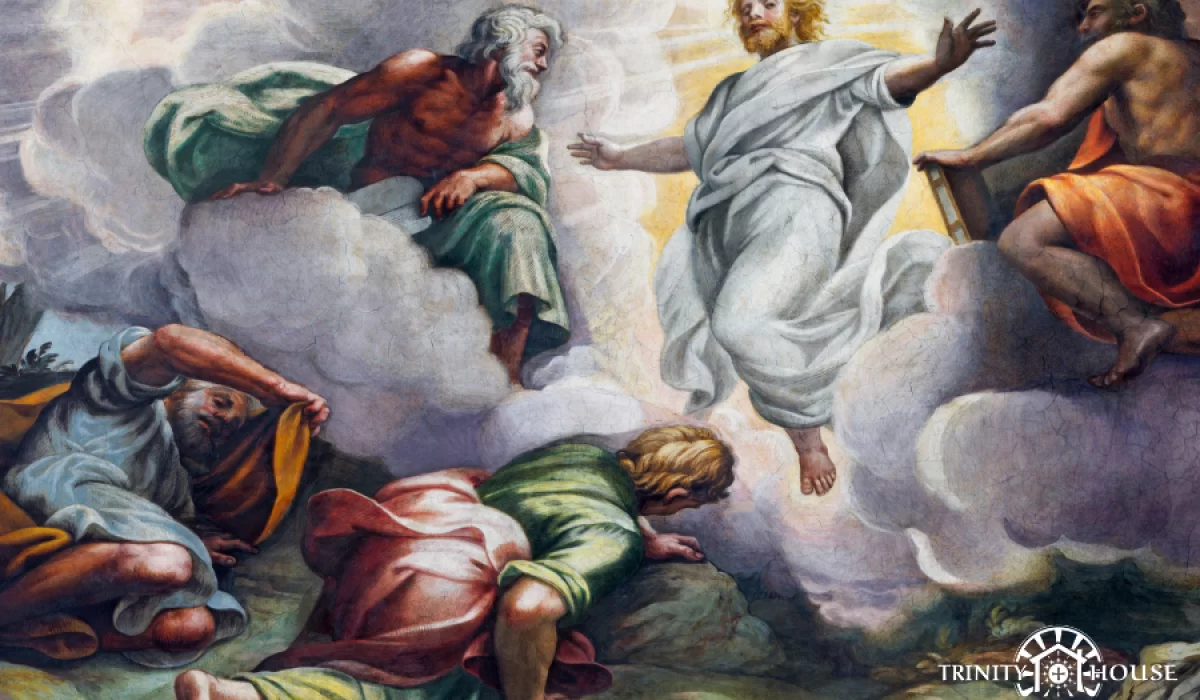
To hear this letter read by Ever, click here:
Dear Friend,
We can hardly believe it, but this summer we’re celebrating our 20th wedding anniversary. Big markers like this have a way of refocusing us on the essentials—on what grounds our relationship and how we want to continue growing together.
In fact, last week’s Feast of the Transfiguration of the Lord took us back to that summer of 2001 because of a unique set of conversations we had in those pre-wedding days.
“And he was transfigured before them,” we heard in last Friday’s Gospel account of the Transfiguration on Mount Tabor, “and his clothes became dazzling white, such as no fuller on earth could bleach them.”
Of course, not many of us use this word in daily speech. To “transfigure” means “transform into something more beautiful or elevated.” On Thursdays, we contemplate the Transfiguration as one of the Luminous Mysteries, but that may be the extent to which most of us reflect on it.
It’s easy to put “transfiguration” into a compartment of holy-sounding words reserved for Jesus alone, and in a sense, we’d be right. But “The Transfiguration,” the Catechism explains, “gives us a foretaste of Christ’s glorious coming, when he ‘will change our lowly body to be like his glorious body (Phil 3:21)’” (556).
Along those lines, in those months leading up to our wedding, we remember coming across a galvanizing idea in Catholic philosopher Dr. Alice von Hildebrand’s letters, in which she wrote about having a “Tabor vision” of her spouse. As Troy and Kathleen Billings summarize in an article about this phrase:
“When you fall in love, you are given a great gift: you are granted a perception of your beloved’s true self, who they are meant to be genuinely at the deepest level….You are able to look past their faults because the vision you see is simply astounding and takes root in your heart….It is at this moment, when you fall in love and are given a Tabor vision, that you see your spouse more visibly than does any other human being.”
Looking back, von Hildebrand’s quote struck us so powerfully because we knew we had each been given a “Tabor vision” of the other. Beyond our various faults, wounds, and shortcomings, we had seen one another’s fundamental identity in the Lord—as a beloved son and daughter of the Heavenly Father.
In the second week of each month, we turn our focus to Level 2—Person & Relationships—and our question is this: Have you had a Tabor vision of your spouse? To paraphrase the Catechism, have you glimpsed your spouse’s “glorious” reality that he or she—Lord willing—will someday have, in the presence of almighty God?
Candidly, we all have days that are anything but dazzling. The Tabor vision may seem far-off for any number of reasons, so how do we recapture it? How do we keep the Tabor vision of our spouse before us? How do we remind ourselves that we are our spouse’s number-one aide on the path to holiness?
Here are three practices that have blessed us (when we remember to do them!):
1. In daily private prayer, we ask the Lord to renew our desire to help each other grow in holiness. We imagine the other standing before our Lord in eternity. This image blesses and enriches our prayers for each other.
2. We try very hard to endure slights patiently. Every spouse experiences fatigue and stress on top of pre-existing wounds and temptations, and it’s easy to take it out on each other. Instead of reacting with a comeback, we try to summon the Tabor vision, and endure the slight with love and acceptance.
3. In daily prayer, we renew our own identity in Christ. “We can’t give,” goes the famous saying, “what we don’t have.” If we don’t have an understanding of our own transfigured self—as saints-in-the-making—we won’t be able to give that to our beloved spouse.
Our Trinity Houses thrive when both spouses focus on helping one another on the journey to holiness. And the Tabor vision of one’s spouse is dazzling beyond description. So as part of what we each bring to the table as spouses, let’s begin to cultivate this vision with greater fidelity, faith, and hope, inviting the Lord to lead us ever closer to his transfigured body

- As we share in our Heaven in Your Home Workshop, Date Night is the “Doorway” to Level 2, Person & Relationships. So we loved how Troy and Kathleen Billings’ “Tabor Vision” (Catholic Current) suggested frequent dates: “Married couples are called by God to keep the Tabor vision of their spouse at the forefront of their mind and in the deepest part of their heart, in order to develop a mindset of continually dating their beloved.”
- In “Stop Gossiping About Your Spouse: Remember Your Tabor Vision Instead,” Mariette Rintoul (Natural Catholic Mom) writes, “Give them [your spouse] some grace. Remember that they are not perfect…and neither are you.”
- Speaking of deepening your relationship with your spouse, have you seen the For Your Marriage site? It’s a fantastic compilation of advice, real life stories, and Church teaching aimed at strengthening your marriage. More Person & Relationship Tools…

- Get a head-start on preparing for this Sunday’s Feast of the Assumption! In “Opening the Word: The Feast of the Assumption,” Univ. of Notre Dame’s Timothy O’Malley writes, “What we proclaim about the Blessed Mother, we ourselves dare to hope for. Eternal life with God is meant to be an embodied experience for men and women. Our bodies are not obstacles, something we must defeat to enjoy the eternal presence of the triune God.”
- Our Heaven in Your Home Workshop is now online! Share this new resource with others by forwarding them the link to this sign-up page to gain immediate access.
- Coming up fast: Check out the speaker lineup for the upcoming Aug. 12-15 virtual “Say The Word” Southeast Catechist Conference, co-sponsored by the Diocese of Arlington. Registration is free.





